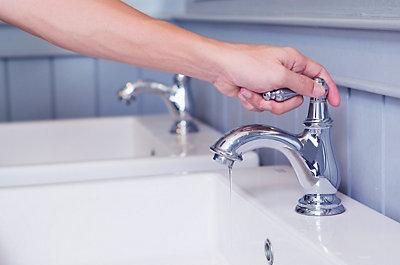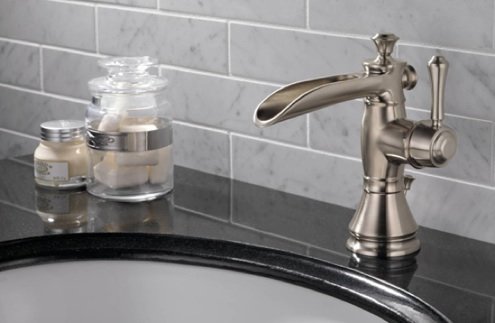My Reasons Behind Resolving a Broken Faucet
My Reasons Behind Resolving a Broken Faucet
Blog Article
Any individual maintains their personal way of thinking about Why Are My Faucets Dripping (And Can I Fix It Myself)?.

Trickling taps could seem like a small aggravation, but their impact goes beyond just the inconvenience of the audio. From drainage to sustaining unneeded economic prices and health threats, overlooking a trickling tap can result in different consequences. In this write-up, we'll explore why it's essential to address this typical household issue without delay and successfully.
Waste of Water
Environmental Influence
Trickling taps add significantly to water wastage. According to the Epa (EPA), a solitary faucet dripping at one drip per secondly can lose greater than 3,000 gallons of water annually. This not just strains water sources however additionally affects ecological communities and wildlife based on them.
Financial Prices
Increased Water Expenses
Past the ecological impact, dripping faucets can pump up water bills significantly. The gathered wastage over time translates into higher utility costs, which might have been prevented with timely repair services.
Possible Residential Property Damages
Additionally, extended dripping can lead to harm to fixtures and surfaces bordering the tap. Water build-up can cause discoloration, corrosion, and also structural issues if left neglected, leading to additional repair prices.
Health and wellness Concerns
Mold And Mildew and Mildew Development
The continuous existence of moisture from a leaking faucet produces a perfect setting for mold and mildew and mold growth. These fungi not just endanger interior air high quality but also pose health threats, specifically for people with respiratory system problems or allergies.
Waterborne Diseases
Stagnant water in dripping taps can come to be a breeding ground for microorganisms and other microorganisms, enhancing the threat of waterborne illness. Contaminants such as Legionella bacteria thrive in stationary water, potentially bring about severe diseases when consumed or inhaled.
Do it yourself vs. Specialist Repair work
Pros and Cons of DIY Fixing
While some may attempt to deal with a dripping faucet themselves, do it yourself repairs feature their own set of difficulties. Without appropriate understanding and devices, DIY attempts can worsen the concern or bring about incomplete repair services, extending the issue.
Advantages of Working With a Professional Plumber
Hiring an expert plumber guarantees that the underlying root cause of the dripping faucet is addressed effectively. Plumbings possess the proficiency and equipment to detect and repair faucet concerns effectively, conserving time and minimizing the risk of more damages.
Step-by-Step Overview to Taking Care Of a Dripping Faucet
Devices Needed
Before trying to take care of a dripping tap, gather the essential tools, including an adjustable wrench, screwdrivers, substitute parts (such as washers or cartridges), and plumber's tape.
Usual Tap Issues and Their Solutions
Identify the type of faucet and the specific concern triggering the drip. Usual troubles consist of damaged washing machines, corroded shutoff seats, or defective O-rings. Refer to maker guidelines or on the internet tutorials for step-by-step advice on repair services.
Preventive Measures
Routine Upkeep Tips
To avoid trickling faucets, carry out regular upkeep such as cleaning up aerators, evaluating for leaks, and replacing damaged components quickly. Furthermore, take into consideration installing water-saving tools or upgrading to extra effective fixtures.
Importance of Prompt Services
Resolving leaking taps as soon as they're observed protects against additional water wastage and prospective damages, ultimately saving both water and money over time.
Influence On Home Value
Understanding of Well-Maintained Residential Property
Maintaining a property in good condition, including attending to upkeep problems like leaking faucets, boosts its regarded value and value amongst potential buyers or renters.
Influence on Resale Value
Characteristics with well-maintained plumbing components, including faucets, command greater resale values in the realty market. Resolving trickling taps can contribute to a favorable impact throughout building inspections and settlements.
Ecological Duty
Specific Payment to Conservation
Taking responsibility for fixing leaking taps lines up with broader efforts toward water preservation and ecological sustainability. Every person's activities jointly make a significant impact on preserving precious resources.
Lasting Living Practices
By focusing on punctual fixings and embracing water-saving routines, people contribute to sustainable living methods that profit both existing and future generations.
Conclusion
Addressing a leaking tap surpasses plain ease; it's an important action towards saving water, minimizing economic prices, and securing wellness and residential property. Whether via DIY repairs or professional aid, doing something about it to take care of leaking faucets is a tiny yet impactful method to promote liable stewardship of sources and contribute to a much healthier, extra sustainable future.
Why Are My Faucets Dripping (And Can I Fix it Myself)?
Causes of a Dripping or Leaking Faucet
Whether you’re hearing drops of water falling and hitting a sink, or noticing water ooze out from the base of the spout, you shouldn’t ignore a dripping or leaking faucet. And, the good news is, sometimes you can fix the problem yourself.
In this article, we’ll review a few common causes of dripping and leaky. We’ll also walk you through some basic ways to find the problem and handle it without calling anyone — and let you know when to call in a pro.
But, no matter what the cause, or whether you can handle it on your own, the sooner you address it, the better.
Each drip may be a tiny amount of water. But, they all add up quickly. According to the U.S. Geological Survey, one faucet losing one drop every 20 seconds — five a minute — wastes around a liter of water every day, and 173 gallons a year.
Add in more than one in your house, and it’s a lot of water to waste. So, we’ll help you get to the bottom of things quickly.
Four Reasons Your Faucet May Be Dripping
Aerator is Damaged or Unseated Valve Seat is Corroded O Ring is Loose or Worn Out Part of the Assembly is Loose Aerator is Damaged or Unseated
If you unscrew the end of your faucet, you’ll find the aerator. It’s the little stem piece with a screen on it that shuts off the water circulation.
If it’s damaged, or if it’s not sitting right, it will allow water to pass through.
Valve Seat is Corroded
Next is the valve seat, which is connected to the washer. If the washer wasn’t in place correctly, then it could have ground against the seat. Over time, this damages the valve seat.
The problem could also be corrosion: Over time, the part has worn out, and it’s now allowing water to pass through.
O Ring is Loose or Worn Out
Since the o ring is only a small rubber gasket, it’s a common reason why the faucet is dripping. You’ll find it at the base of the faucet, and it’s there to keep water from coming out where it’s not supposed to.
However, it’s common for the o ring to wear out over time. When it does, you’ll notice a drip.
Part of the Assembly is Loose
So far, we’ve looked at a few small, specific parts. But, the problem could be anywhere in the assembly if something’s out of place.
Even if a part isn’t damaged, over time, it may have become loose or dislodged. It could be the parts we mentioned, or the aerator at the tip of the faucet, the stem itself,
Can I Fix a Leaky Faucet Myself?
Depending on the problem, and how handy you are, there’s a chance you can fix a leaky faucet without calling a professional. But, you do run the risk of making the problem worse.
If it’s a small drip, you can certainly try a few troubleshooting tactics. We’ll walk you through them in a moment.
But, no matter what, your first step should be shutting off the water coming into the faucet. You should find a shutoff valve under the sink on the pipes leading to it. Turn each one clockwise until they close tightly.
Next, make sure you have the right tools for whatever you’re attempting. It’s tempting to make do with what you have. But, you need the right ones for a reason: You’re often dealing with small parts that can break if you handle them carelessly.
If you’re feeling confident, here are some places to start.
Items Near the Tip of the Faucet
A few of the parts we mentioned — particularly the valve seat and washer — are located at the tip of the faucet where the water comes out. They’re easy to access, making it a good place to start.
Check the O Ring
To check the o ring, you’ll need to take off the spout at the base. It’s easiest on kitchen sinks with long spouts, versus the smaller, bulkier base on most bathroom sinks.
Either way, this can be tricky, so do it carefully and don’t force anything. If it’s not coming right off, you’re much better off calling in a pro than possibly breaking something.
For a kitchen sink, there’s usually a nut or coupling assembly at the base of the spout. These often slide off easily without using any tools.
Once you’ve disassembled those parts, gently but forcefully twist off the spout.
Then, you can see the o rings. There should be two of the rubber gaskets on the base. If they look worn or damaged, replace them, and see if that solves the problem.

I was made aware of that editorial on What Causes Leaky Faucets & How To Fix Them from a friend on another web property. Do you know anybody else who is involved in How to Fix a Dripping or Leaky Faucet ? Why not share it. We treasure your readership.
Report this page